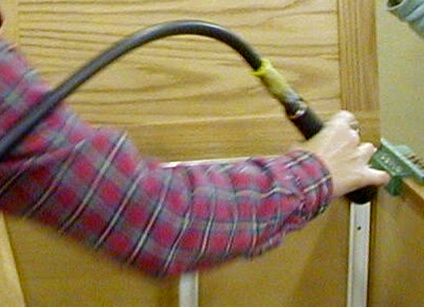 |
| Heavy and stiff |
Background
Air power tools require a hose that in some circumstances can make the job unnecessarily more difficult. Employees sometimes call this issue “fighting the hose,” referring to the weight and stiffness of the hose and/or the rigid connector between the tool and the hose.
Objectives
The point, in this context, is to reduce force on the arm and wrist. (If the hose hangs straight and there is no extra load caused by maneuvering and bending, then adaptation may not be needed.)
Ideas and Options
Flexible couplings
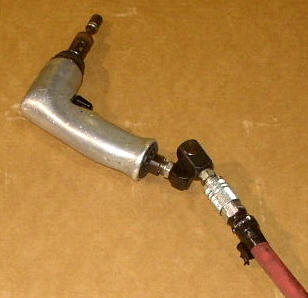 |
| Swivel coupling |
In instances when the tool needs to be oriented or maneuvered in a way that bends the hose (see photo top of page), it can be helpful to replace the standard rigid connector with a flexible or swivel connector.
Hose weight
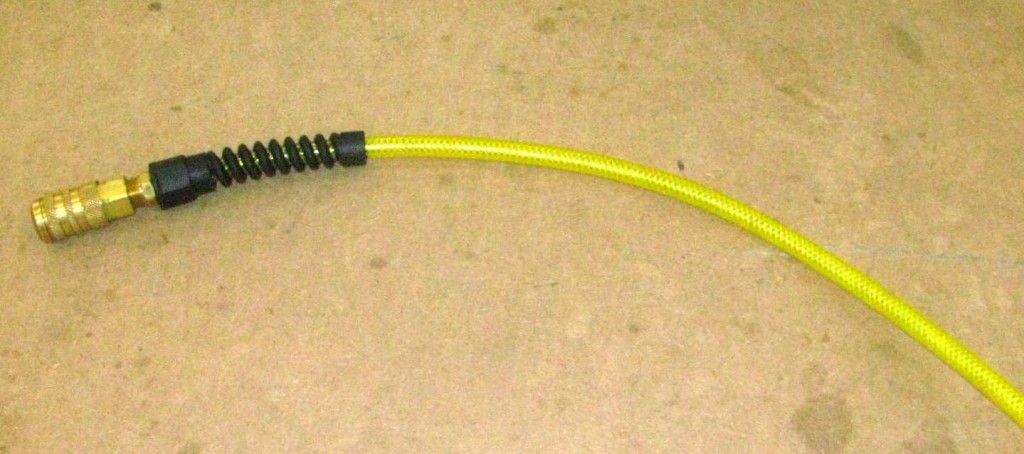 |
| Lightweight style hose |
The standard air hose is rubber and can be thick and unwieldy. Alternatives are available constructed from plastic such as nylon or polyurethane and are generally lighter and more flexible. Some versions are coiled, which retracts by itself to help keep it out of the way
Reels and hangers
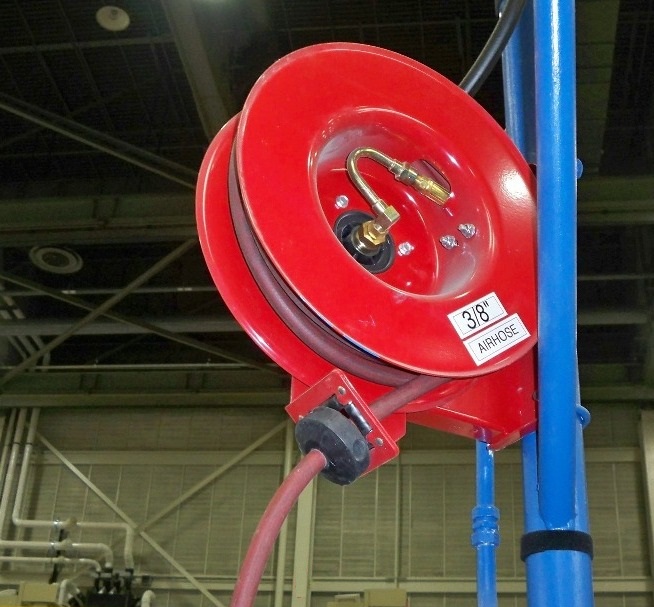 |
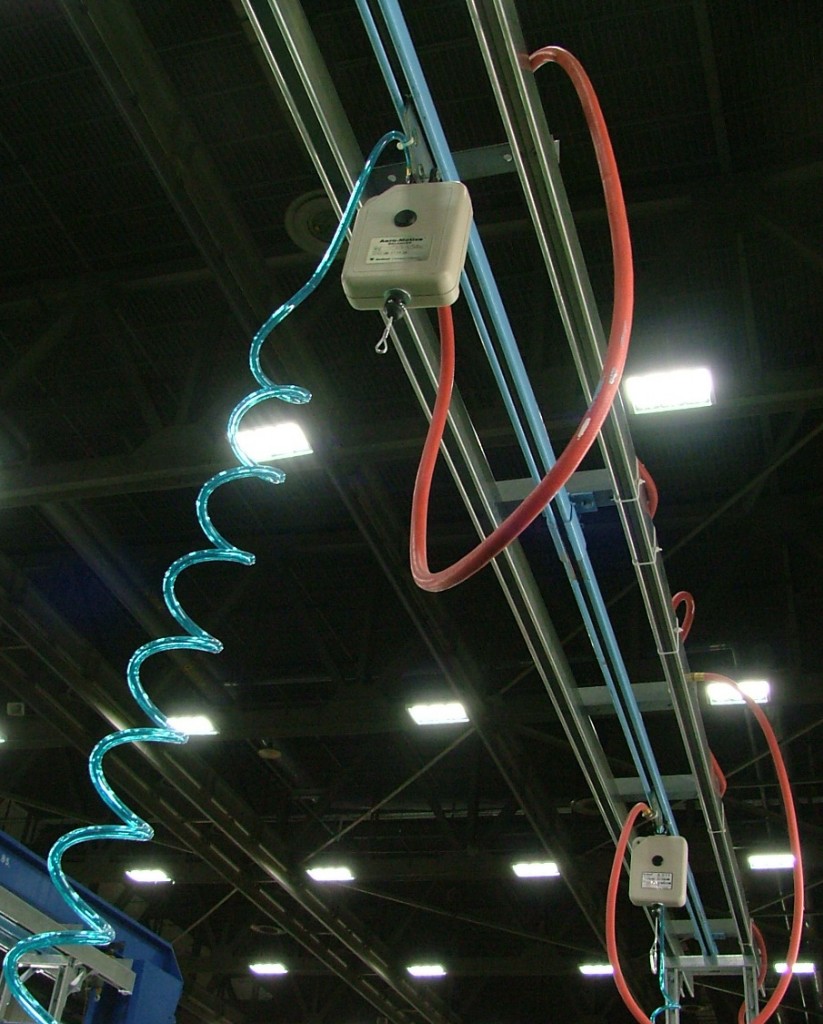 |
| Overhead hose reel | Hose track (note also heavy main hose and lightweight blue hose to workstation) |
Hose heels are commonly used. When placed overhead they help support the weight of the hose, plus help keep the hose off the floor, thus preventing trip hazards as well as protecting the hose.
 |
| Counterbalance arm |
Counterbalances of various types can also be used to support the weight of the hose as well as the tool.
